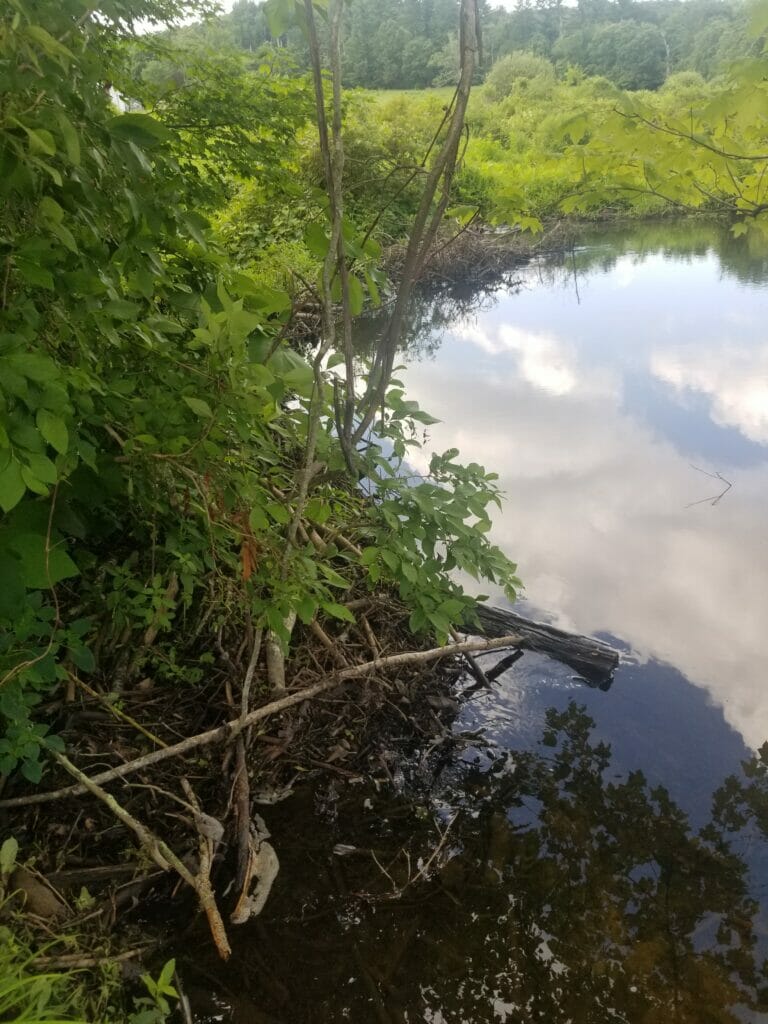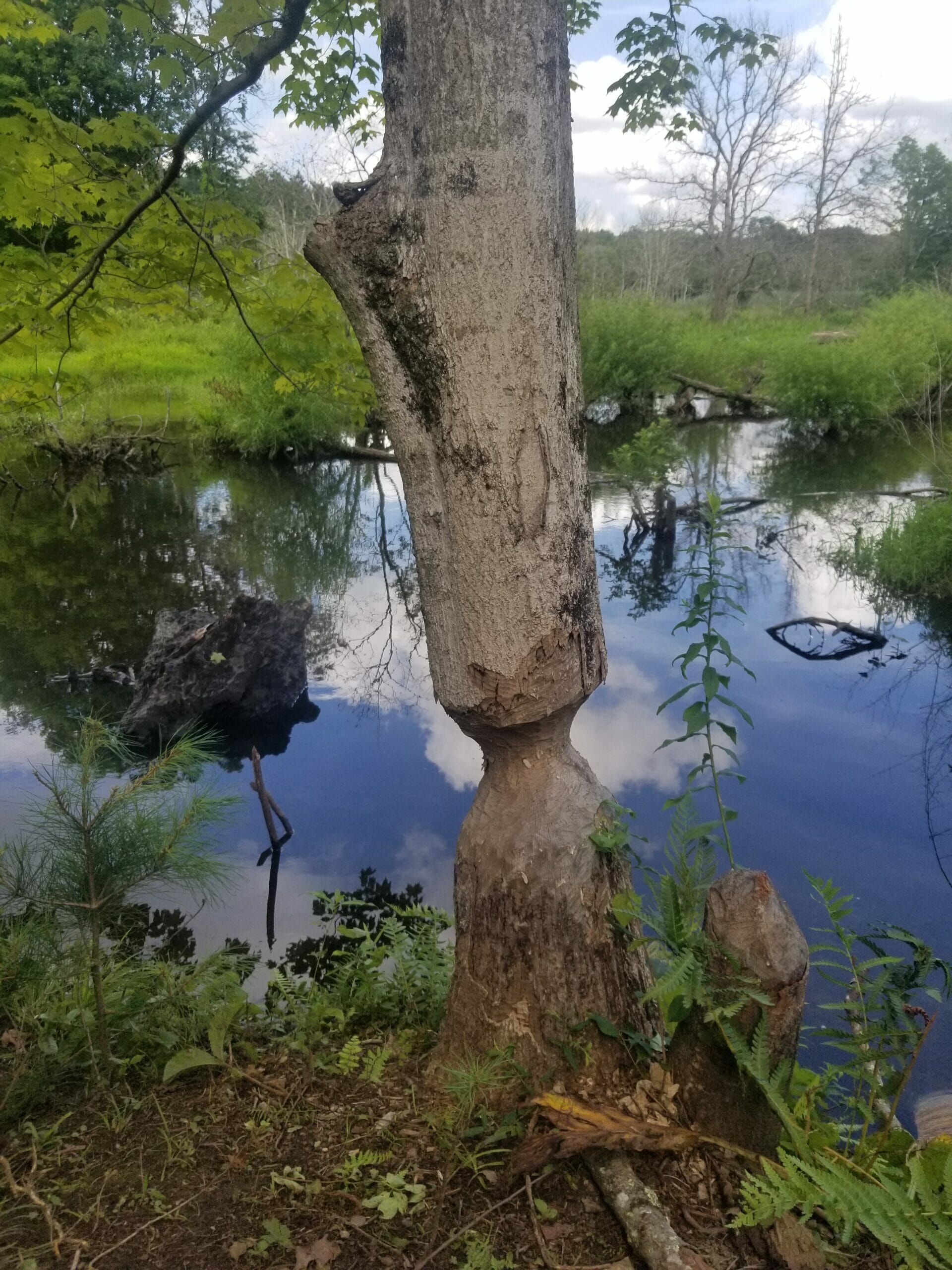It’s been over a month since we released our Think Tank brook trout into the Cross River, and we are finding that they have new neighbors moving in: beavers!
Evidence of the beavers can be seen all along the stream—from dams to lodges, chewed down trees to flooded plains. Beavers have long been known to be ecosystem engineers and drastically change the stream in many ways.

The fur trade and the trapping of beavers nearly caused their extinction in the 1800s; however, they are now making a comeback. In many western states this is a cause for celebration. In fact, many Trout Unlimited scientists and volunteers are working together to bring back beavers and even replicating beaver dams for the purpose of counteracting impacts of droughts and climate change. These structures, known as beaver analog dams, are also creating thermal refuges for trout and other species.
At Ward Pound Ridge Reservation, the presence of beavers is a bit more worrisome. The park is already impacted by invasive plant species, plus the removal of old-growth and understory trees and riparian habitat threatens the existing natural diversity. Additionally, while the beavers will eventually move on, the picnic areas, park roads, hiking trails, and niche ecosystems may not survive the new beaver-altered landscape. For the trout in the Cross River, the impacts by the beavers are complex and will vary over time. While it seems the fish in the streams are doing well, they will need to adapt to the changes to survive in the “stream”-scape.
Science Journal question for TIC students: What do you think beavers need to survive? What might be some clues to look for along a stream for evidence of beavers?
Dive even deeper: Beavers can have both positive and negative impacts in a stream ecosystem. What are some ways people can minimize these negative impacts while coexisting with beavers?
Hands on STEM for the family: Build your own watershed. Gather up some sand, rocks, sticks and mud to try this fun experiment at home or outdoors.



